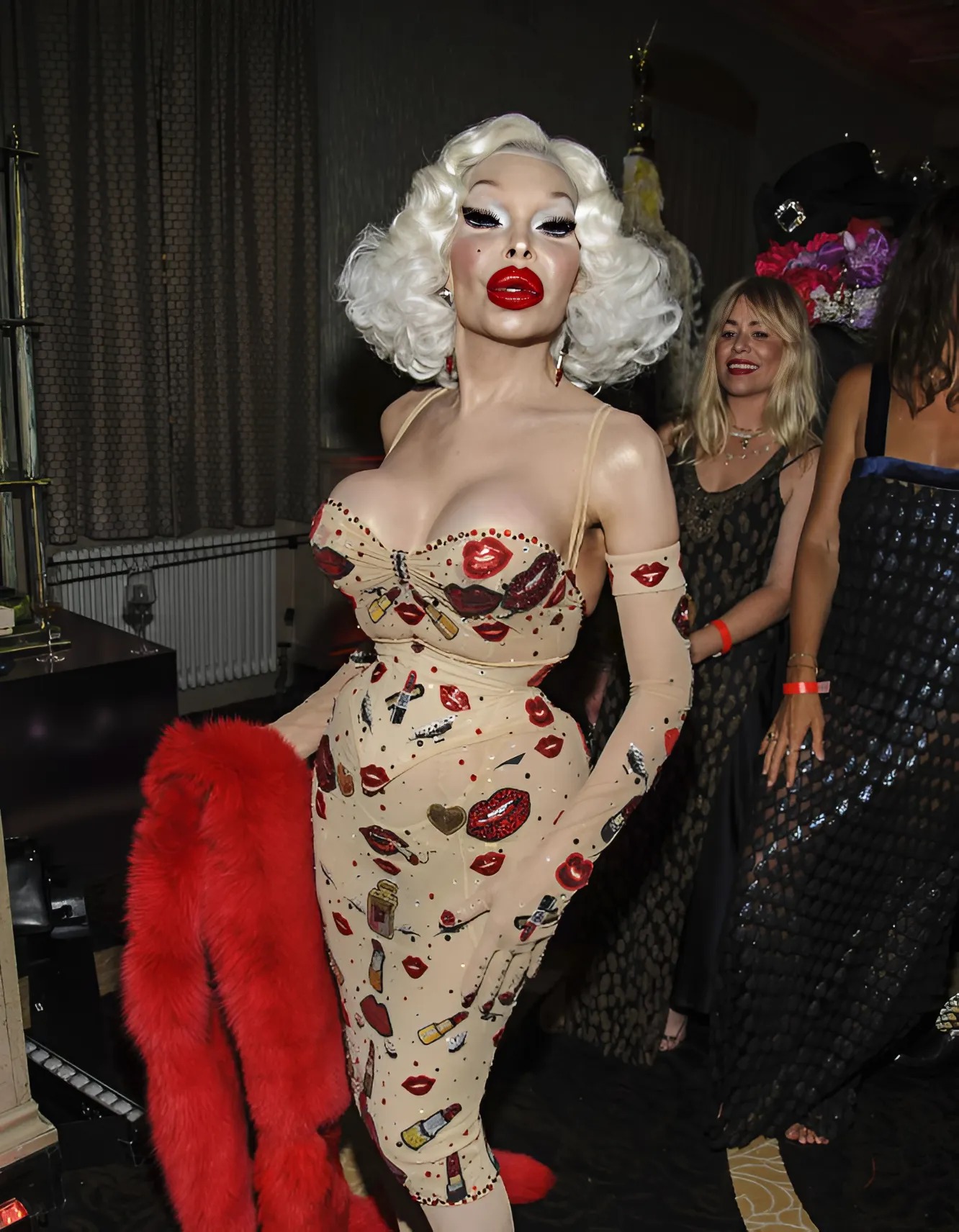Amanda Lepore is one of the most striking and unconventional figures in American pop culture — a living icon of transformation, self-expression, and defiance of norms. Often described as a “living doll” or “walking piece of pop art,” Amanda has built an entire identity around the idea that beauty isn’t something you’re born with — it’s something you can create. And in her case, that creation has been nothing short of extraordinary.
From a very young age, Amanda knew she was different. Born in a boy’s body, she recalls feeling like a girl long before she had the language or support to express it. By the time she was a teenager, Amanda had already started taking hormones and experimenting with her appearance in secret. Her parents didn’t understand, and their disapproval made the process even harder. But Amanda was determined. At just 19 years old, she underwent gender reassignment surgery — a huge step toward aligning her outer self with how she had always felt inside.
For many, that kind of transformation would be enough. But for Amanda, it was only the beginning.
Inspired by the over-the-top glamour of old Hollywood — stars like Marilyn Monroe and Jayne Mansfield — Amanda set out to craft her body into her own version of perfection. She didn’t just want to be a woman. She wanted to become an ideal — a hyper-feminine fantasy, exaggerated and unforgettable, like a character from a vintage comic book or a 1950s pin-up brought to life.
Her journey through plastic surgery is one of the most extensive ever documented. She’s had multiple rhinoplasties to reshape her nose, breast augmentation, a forehead lift, cheek and jawline reconstruction, and regular Botox injections. She had her hairline altered, her lips enlarged to exaggerated proportions, and even underwent the surgical removal of ribs to create a more dramatic hourglass figure. Every part of her body has been sculpted with intention. Every change was part of a bigger vision.
Amanda has never denied the extent of her procedures — in fact, she embraces them. To her, the work isn’t about hiding flaws, but about creating art. “I do this for myself,” she often says. “I am a work of art.” And she means it. Her appearance is not the result of insecurity, but of imagination — a living canvas she has molded into something undeniably her own.
Of course, not everyone has understood or accepted Amanda’s choices. Over the years, she’s been mocked, questioned, and even vilified by some. But she’s also been celebrated. After moving to New York, Amanda became a muse to legendary photographer David LaChapelle, who saw in her a bold, surreal vision of femininity that perfectly suited his hyper-glamorous aesthetic. She appeared in high-fashion campaigns, magazine covers, music videos, and even films. Her image — platinum hair, impossibly full lips, waist cinched to the extreme — became instantly recognizable.
Beyond her looks, Amanda has become a symbol of resilience and reinvention. She’s lived through eras of intolerance, navigated the underground nightlife scene, and emerged as one of the most famous transgender women in the world. Her story, while filled with pain, is ultimately one of self-love — not the kind that comes from acceptance by others, but the kind you build when you’re willing to fight for who you are.
Amanda Lepore didn’t just dream of becoming beautiful. She dreamed of becoming unforgettable. And she did — not by conforming to society’s standards, but by tearing them apart and rebuilding them in her own image.





